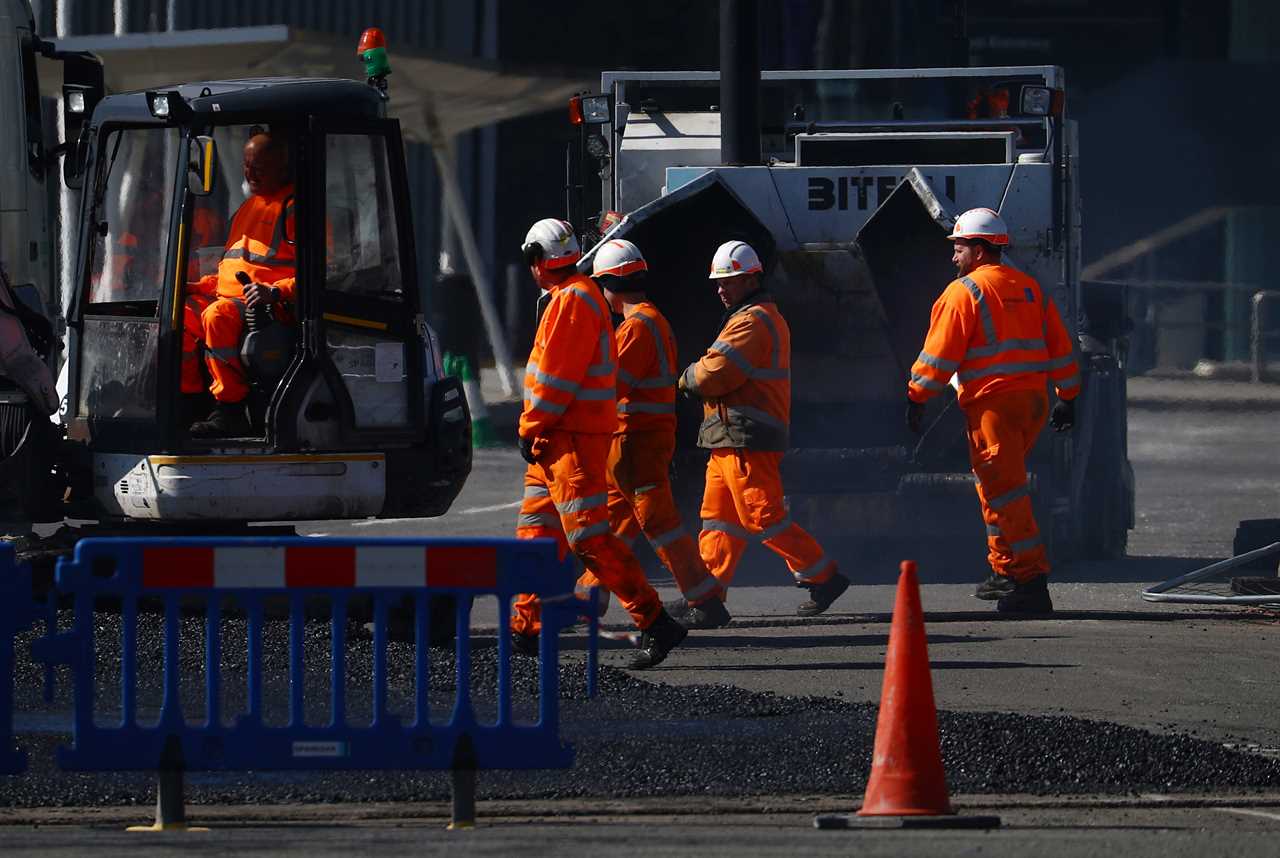BUILDERS and construction workers might be wondering if they can still go to work during the third coronavirus lockdown.
Prime Minister Boris Johnson plunged the whole country under stay at home orders – you can only leave your home for a handful of reasons.

Employees must work from home if they can until the measures are eased, which may not be until March.
But what does this mean for builders and construction workers?
I’m a construction worker – will I have to go to work?
If you’re working on a building site, and you don’t need to self-isolate or have symptoms of coronavirus, you will still be allowed to go into work.
This is because the advice from the government is to work from home if you can, which is something builders and construction workers can’t do.
However, your place of employment must be Covid-secure and you’ll still be expected to maintain social distancing.
Government guidance states: “You can only leave home for work purposes where it is unreasonable for you to do your job from home, including but not limited to people who work within critical national infrastructure, construction or manufacturing that require in-person attendance.”
What are the rules for building and construction companies?
The Construction Leadership Council has pulled together the following recommendations for keeping work places Covid-secure.
Avoid close working:
Although building sites are being asked to maintain social distancing, the government has acknowledged that for some work this will not be possible or safe.
If you are not able to work whilst maintaining current social distancing requirements, employers should be asked to consider if that work should still go ahead.
In addition, workers should avoid skin to skin contact and face to face working.
Travel to site:
Workers should use private vehicles where possible, but if they need to share transport, they should consider the following:
- Employees should share cars with the same people, and as few people, as possible
- Car windows should be kept open
- Workers should travel side by side, rather than behind other people
- All passengers should wear a face covering
- Vehicle must be cleaned between journeys
Or if using public transport, workers should:
- Try to avoid travelling during peak times
- Wear a face covering
Hand washing:
Employees should be given extra hand washing facilities, with soap and fresh water readily available and topped up throughout the day.
These facilities must be sanitised regularly, and bosses are encouraged to provide extra rubbish bins.
Toilet facilities:
The number of people using the toilet facilities at any one time should be limited.
Staff must also wash their hands before and after using toilets, and the cleaning of the toilet areas must also be increased – especially door handles, locks and flushing mechanisms.
Employers are being asked to avoid portable toilets.
Canteens and eating arrangements:
Break times should be staggered to reduce congestion and contact at all times.
In addition, staff should be asked to bring pre-prepared meals and refillable drinking bottles, and workers must sit two metres apart.
The following measures should also be considered:
- Remove all kettles, microwaves if they cannot be cleaned between uses
- Soap and water or sanitiser must be provided at the entrance of all eating areas
- Where catering is provided on site, it must be pre-prepared and wrapped.
- Payments must be contactless where possible
- Crockery, eating utensils and cups must be disposable or brought in by employees
- Tables should be cleaned between each use
- Eating areas must be thoroughly cleaned when each break ends, including chairs, door handles, vending machines and payment devices.
Changing facilities, showers and drying rooms:
Sites must have staggered start and finish times for its cleaning facilities, and these areas must be cleaned more often.
A maximum number of employees can use each facility at a time to discourage crowding.
Sites should also consider:
- Banning visitors
- Changing and staggering site hours to reduce congestion on public transport
- Introduce one-way systems
- Parking arrangements for additional vehicles and bicycles
- Providing facilities such as lockers and showers
- Providing hand cleaning facilities at entrances and exits. This should be soap and water wherever possible or hand sanitiser if soap and water are not available
- How someone taken ill would get home
All non-essential shops have been forced to close again to help stop the spread of Covid-19.
Restaurants will also close, but businesses can still provide takeaway food – we’ve got a full list of food chains that will offer takeaway and delivery.
But this time around, they won’t be able to serve takeaway pints.






